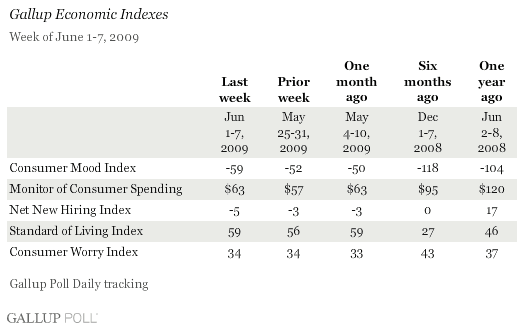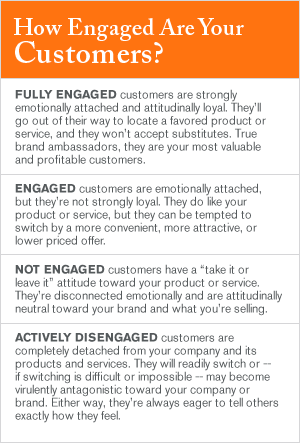Depending on who's reading the economic tea leaves, there are some signs that things may be getting better. Or maybe they've just stopped getting worse. The cautiously bullish "signs of stability" and "bottom has been reached" comments of some company CEOs may perhaps be tinged as much by wishful thinking as by hard data. Certainly, the supporting evidence is mixed. Nevertheless, companies are talking about the future and gearing up for the challenges they'll face once things settle down.
And they will settle down, won't they?
That depends on what we mean by "settle down." Many analysts are convinced that the post-recession environment will look nothing like the marketing world we once knew or thought we knew. Some forecasters are predicting a new world that will be populated with smaller, greener cars. Some anticipate a sharp decrease in home ownership, with smaller homes that have a lot less "stuff" in them. There's talk about a future where consumers will be far more conservative in their investments and where they'll be saving more and spending less. (See "Where Is the Economy Going?" and "In U.S., 32% Say Spending Less Is Their 'New Normal'" in the "See Also" area on this page.)
Even the most optimistic company leaders acknowledge that a revival in consumer spending won't be happening in the next few fiscal quarters. Gallup's U.S. polls report that consumer spending remains flat, and more than half of consumers (58%, as of June 9) feel that the economy is still getting worse. (See "Weekly Economic Wrap: Muted Reaction to GM Bankruptcy" in the "See Also" area on this page.) In any case, whenever this hoped-for spending resurgence does begin to show itself, the expectation is that business will definitely not be "as usual."

Some business leaders anticipate that consumers will be much more demanding because they'll remain highly sensitive to price yet also intolerant of poor quality or poor service. So a strategy that involves cutting prices by skimping on performance isn't likely to thrill the customer or ensure loyalty. Many executives expect that today's altered patterns of shopping and buying will remain, that the current intense focus on value for money will endure, and that consumers will never return to their old habits. Some contend that there have been "profound shifts" in shoppers' psychology and that, at least for luxury retailers, "the party's over."
Lessons from the past
But forecasters must bear in mind that the consumers of tomorrow, just like the consumers of yesterday, have emotional needs that are as essential as their rational, functional needs -- and prognosticators must take these emotional needs into account. When consumers were confronted with skyrocketing gas prices and long service station lines during the 1973 oil embargo, some analysts decreed that U.S. auto buyers would forever abandon the large gas-guzzling cars that had typified the U.S. market. The future, they contended, would be all about small fuel-efficient cars. U.S. manufacturers responded, downsizing their vehicles and equipping them with 4-cylinder engines. This, the thinking went, would be the "new normal" for the 1980s and beyond.
But U.S. auto buyers were never focused solely on obtaining better gas mileage, particularly if it came at the cost of vehicle reliability or safety. U.S. consumers wanted vehicles that did more than meet their functional needs (allowing them to get from point A to point B); they wanted cars that also met their emotional needs (the desire for a passionate personal connection to the vehicle they own). Buyers wanted better gas mileage, to be sure, but they also wanted sexy style, riding comfort, and driving performance. They still wanted to feel good about the car they were driving; they still wanted to feel proud. They did ask for fuel efficiency, but they didn't ask for boring.
So, the new small, soulless, gas-efficient boxes were soon replaced by sportier, peppier alternatives, often provided by imports. And in direct contrast with the expectations of some pundits, the route was being paved for the ultimate emergence of the Hummer, which is hardly the type of vehicle predicted by those who were watching the initial, rational, consumer response to an unprecedented marketplace shock.
The world today may well be sharply different from the one that existed four decades ago. Yet there are some evident caveats for anyone aiming to market to the consumers who will be emerging from the current unprecedented bubble-bursting economic slump: Never ignore the emotional component.
First, let's look at what's happening at the moment. McDonald's has been doing very well, selling its value meals while marketing its coffee in competition with higher priced Starbucks. Wal-Mart has shown real growth, and in the U.K., price-focused Morrisons has been outperforming its supermarket rivals. Grocery and convenience store shoppers have been turning to less expensive private-label goods, and consumers are increasingly clipping and redeeming coupons.
The "new normal" isn't likely to be a world where consumers continually deny themselves personal rewards.
In response to price-sensitive shoppers, retailers have been diligently slashing their prices and demanding that companies that make the products they carry do likewise. Diners have been scaling back their taste for fancy foods and fancy restaurants, and shoppers appear to be shunning frills and emphasizing essentials. But are these changes merely short-term coping mechanisms, or are they the harbinger of totally new shopping patterns and habits?
A future without frills?
The critical question isn't so much what consumers are doing now but whether they'll keep doing it in the future. Of course, time will tell. But regardless of the accuracy of the "new normal" forecasts, many retailers are already actively preparing for what they believe will come next. Tesco is reportedly investing $225 million to relaunch its loyalty program. Grocers such as ALDI are building new distribution centers. Some of the big retail chains are expanding, with Dollar General and CVS joining Walgreens and Wal-Mart in planning to add hundreds of new stores to extend their reach.
Despite the seeming power of a price promise, successful long-term marketing will never be just about meeting consumers' functional needs. Consumer-perceived brand value involves a whole lot more than just price.
In truth, much of what's "new" about all this is actually not all that new. In working with marketers in categories ranging from supermarkets and banks to hotels and autos, ”≈√€¥´√Ωhas learned that there are fundamental prerequisites for a healthy brand, whether times are good or bad. Healthy brands are those that develop and nurture engaged customer relationships.
The essential bedrock for an enduring relationship has always been, and will always be, customer confidence. And that foundation, for many companies and in many industries, has been shaken. Marketing organizations that are surviving -- and thriving -- will be those that address the need to rebuild this foundation with meaningful promises that can and will be kept at every customer encounter. Price is only one promise, and long term, it may not speak to the consumers' emotional needs or their desire for self-expression.
Consumers will remain cautious about what they buy and when they buy it. But the "new normal" isn't likely to be a world where consumers continually deny themselves the personal rewards -- small or large -- that they feel they've earned. Yet they'll be choosy, perhaps more so than ever before. They know they have options. Thanks in part to the Internet, they now have the means to learn a whole lot about these options, often by hearing the voices of other customers -- the engaged as well as the disengaged. (See graphic "How Engaged Are Your Customers?")

The "new normal" probably will reveal a generally more skeptical consumer, one who feels burned by too many overstated or broken promises. This consumer may be more wary and less readily accepting of company reports, claims, and statements of intent. So, for at least the next few quarters, consumers in many parts of the world are going to be a lot like meerkats. They'll be guardedly poking their heads up to see where the dangers may lie.
Since trust has been dramatically called into question, tomorrow's meerkat consumers will be on the lookout for products and services -- and companies -- that they can believe in and that are demonstrably worthy of their patronage. They may be more willing to switch and to try new solutions. It's certainly possible that they'll abandon their old habits and old brands, but they'll do so for the very same reasons they always have: promises that fail to truly resonate; promises that are made but not kept.
In the "new normal," a few things seem clear. The consumer is now in charge. And the consumer will continue to have emotional needs as well as functional requirements. The companies that recognize this and act accordingly will be the ones that will prosper. It's a daunting challenge, to be sure, but it's also a singular opportunity.